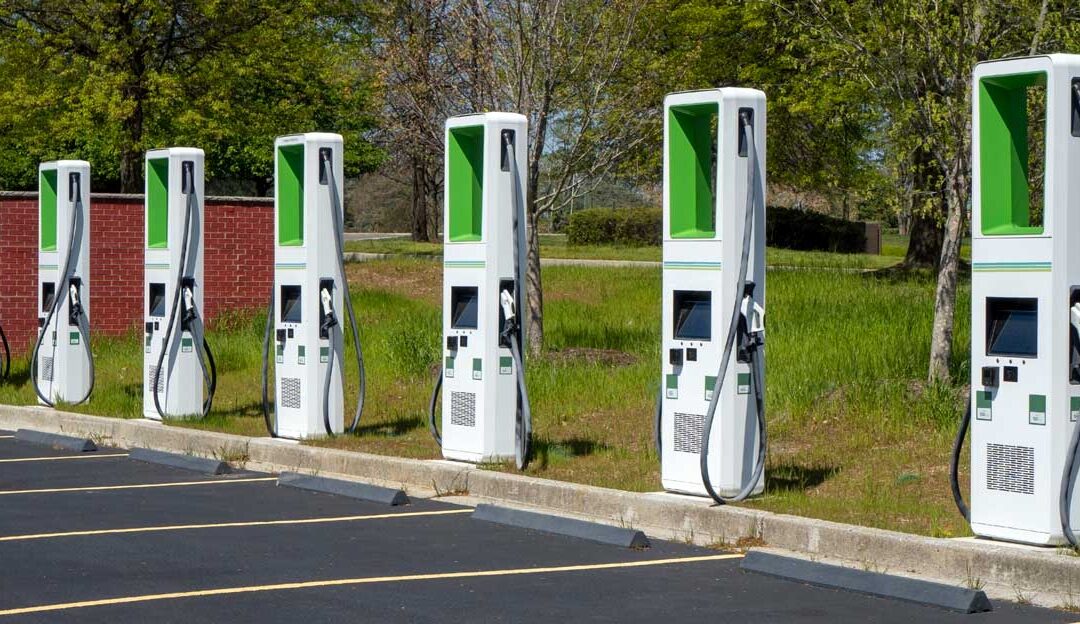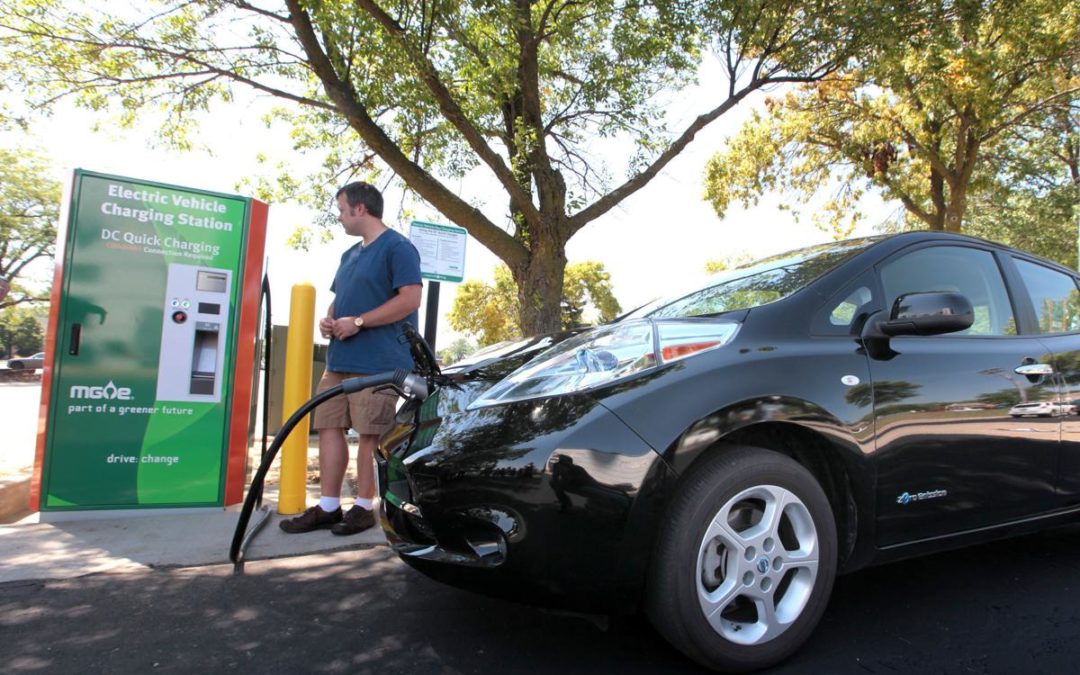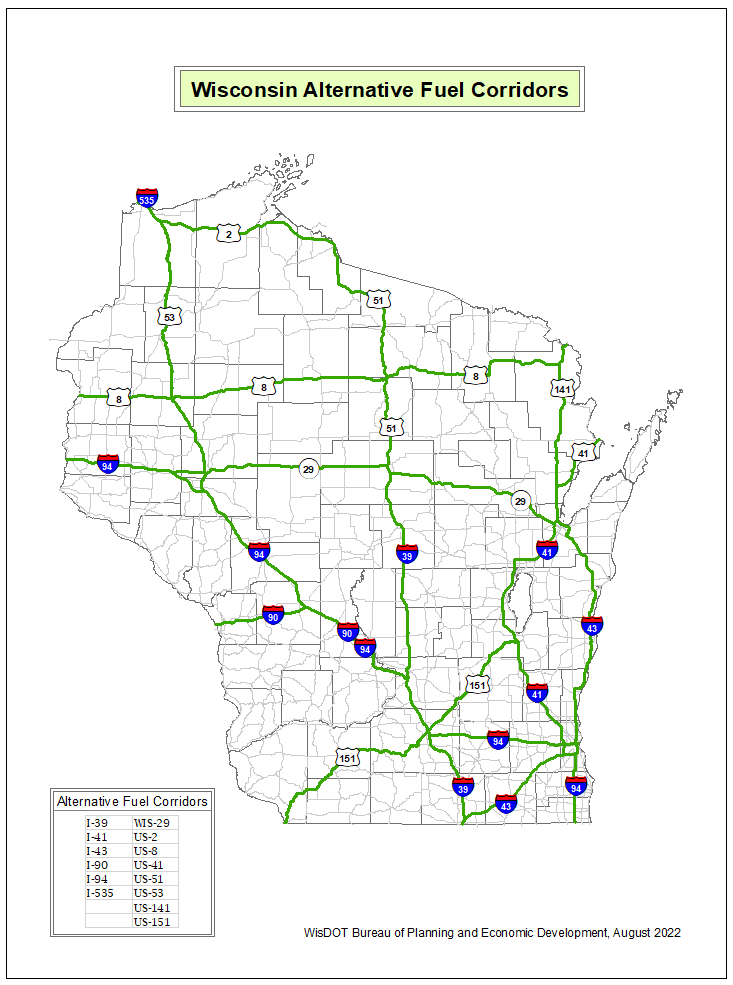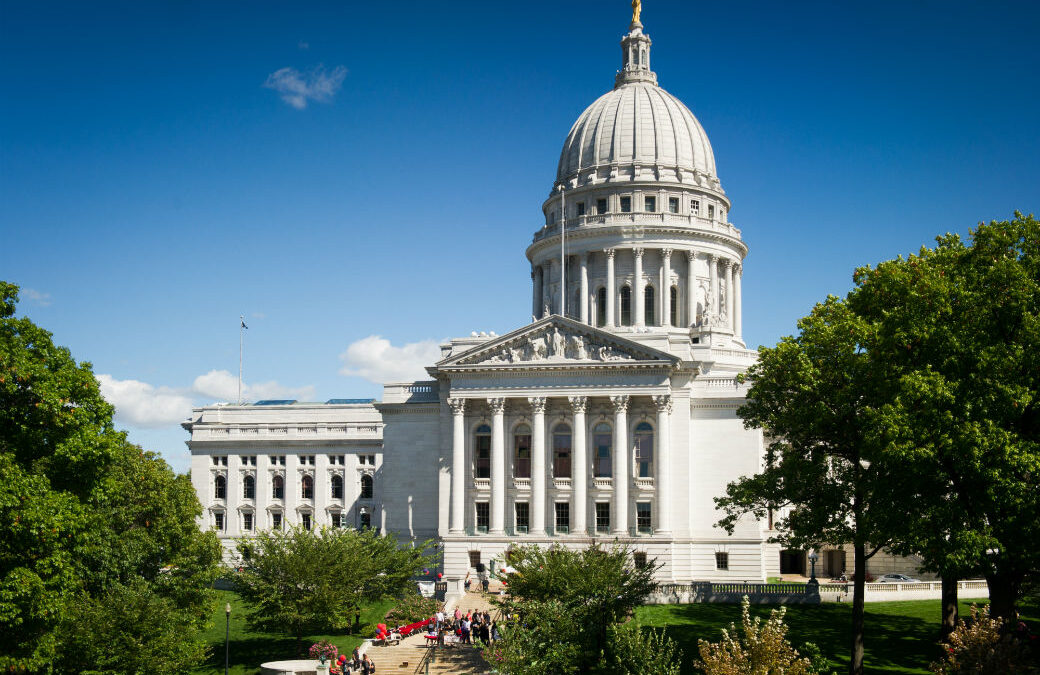
by Ben Behlke | May 24, 2024 | Electric Vehicles, Electrification, NEVI
The Wisconsin Department of Transportation (WisDOT) has revealed the locations of the first 53 Level 3, DC-fast charging, electric vehicle (EV) stations across Wisconsin funded through the National Electric Vehicle Infrastructure (NEVI) Program. This marks a significant milestone in the state’s journey towards a sustainable transportation future.
The announcement follows the signing of legislation in March — Senate Bill 791 and Senate Bill 792, now 2023 Wisconsin Acts 121 and 122. These laws enabled WisDOT to receive and administer over $78 million in federal NEVI funds allocated to Wisconsin. For these initial projects, $23.3 million was awarded. This funding represents a critical investment in the state’s EV infrastructure.
Private Sector Commitment
The drive towards a sustainable future is also being fueled by Wisconsin-based companies. Industry leaders such as Kwik Trip, Menards, Culver’s, Potawatomi Fire Side Market, and Oneida Casino have demonstrated their commitment to the state’s economic future. Collectively, the private sector’s commitment is a substantial one, totaling $10.5 million. This strong state support underscores that the push for new, robust EV infrastructure is coming from within Wisconsin itself.
This significant investment underscores the value that electric vehicles can bring to Wisconsin’s overall economy. It also highlights the confidence that industry stakeholders have in the future of EV adoption and EV infrastructure in the state.
The public-private partnership showcased in this initiative is evidence of the understanding that reliable charging infrastructure will be a benefit to both residents and businesses across Wisconsin. The EV charging network will support drivers, businesses, tourists, and the overall economy of Wisconsin.
Extensive Coverage Across the State
By ensuring that the first round of funding covers a wide range of locations and communities across Wisconsin WisDOT is doing its part to spread the benefits of this new infrastructure. With the strategic placement of these charging stations throughout the state, residents across the state will no longer question whether they could be stranded without power for their EVs.
One of the significant barriers to the widespread adoption of electric vehicles has been range anxiety—the fear that an EV will run out of power before reaching a charging station, much less one that will recharge a vehicle quickly. The establishment of these 53 fast charging stations is a substantial step towards eliminating both concerns. With a robust network of fast charging stations, drivers can feel confident in making the switch to electric, knowing they will have access to fast, convenient, and reliable charging options.

by Orrie Walsvik | Mar 14, 2024 | Electric Vehicles, Electrification, NEVI, RENEW Wisconsin
On March 12, 2024, the Wisconsin State Senate passed Bills 791 and 792, allowing electric vehicle (EV) charging stations to charge by unit of electricity instead of time spent charging. The bill helps provide clean energy access to all Wisconsinites and is a testament to Wisconsin’s commitment to embracing new, proven clean energy technologies. The new law addresses several critical areas to standardize EV usage and infrastructure deployment for private developers. Let’s dive into some of the key parts.
NEVI Funding Unleashed
The cornerstone of the bill is the activation of National Electric Vehicle Infrastructure (NEVI) funding for “Level 3” fast chargers. This funding, totaling a substantial $78 million of federal dollars for Wisconsin, will be channeled toward the building, operation, and maintenance of fast-charging stations across the state. These fast chargers, capable of significantly reducing charging times for longer trips, are vital for reducing range anxiety.
Charging All Over the State, Not Just in Cities
NEVI funding also avoids putting the cart before the horse by providing charging stations across the state, along highway routes for the next five years, paying for the cost of the station, the operations, and the maintenance. Check out the map below to see the routes.

Jobs, Training, Reliability & Safety
But the bill doesn’t stop there. It also emphasizes the importance of training, ensuring that those responsible for these chargers are equipped with the skills necessary to maintain their reliability and safety. Chargers must be operable at least 97% of the time to receive the funding. This commitment to training not only boosts job opportunities but also ensures that the infrastructure remains robust and dependable.
Protects Level 1 and Level 2 Chargers
The Legislation clarifies that residential Level 1 and Level 2 chargers are clear of tax and regulation. It also provides regulatory certainty for groups looking to install public level 1 and level 2 chargers to avoid classification as a public utility, clearing up a large regulatory hurdle for EV Charging implementation. This protection ensures that these residential and light commercial chargers have a realistic path forward in Wisconsin. This move is a win for EV owners and businesses alike, fostering a more flexible and user-friendly charging landscape.
Tax and Road Fund
A tax, similar to the gas tax, of 3 cents per kilowatt-hour (kWh) of electricity used for charging will be implemented for public EV chargers. This measure brings EVs in line with gas and diesel cars. Charging by the kWh also ensures customers pay for the amount of fuel received instead of the amount of time spent charging, a policy that favored individuals with more expensive cars. Now, all users will pay a fair price for their power and end the inequity of time-based charging. Unfortunately, EVs are still required to pay $175 for registration, $75 more than fossil fuel cars.
This bill pairs regulatory certainty for charging station owners with equitable locations and rates for EV drivers. The bill also clarifies how and when local governments can own EV charging stations, and does not effectively change the situations of previously existing chargers.

by Beata Wierzba | Mar 14, 2024 | Advocacy, Electric Vehicles, Legislative Watchlist, Local Government, NEVI, Solar
As the legislature wraps up for this session, RENEW is celebrating several victories and reflecting on some of the other renewable energy measures being considered by the state legislature.
Big Win for Electric Vehicle Infrastructure
Senate Bill 791, the Electric Vehicle Charging Bill, passed the legislature with several amendments. The legislation exempts private entities that develop charging stations from being regulated as a public utility but allows them to measure the cost of electricity used for charging EVs by the kilowatt hour (kWh). Establishing this new kWh standard to calculate how much electricity is used, rather than how long it takes to charge the vehicle, provides an essential uniform requirement for the industry. It is also required by the National Electric Vehicle Infrastructure (NEVI) Program for Wisconsin to qualify for $78 million dollars in federal funding, an 80% cost share, for level 3 chargers to build corridors for charging. RENEW will be developing a detailed overview of the passed legislation for those interested in more information. The bill received bipartisan support and limited opposition. In other actions related to electric vehicles, the Legislature also passed SB 792, which establishes the infrastructure program and enables the state to utilize the federal NEVI funding. Additionally, with the passage of SB 617, the DOT will issue registration plates or stickers for existing license plates that indicate the vehicle is electric.
Progress on Community Solar
The community solar bill, Assembly Bill 258, did not pass either the Senate or Assembly but did get a hearing in the Assembly Committee on Energy & Utilities. This is a significant development considering the heavy opposition from Wisconsin Utilities. The public hearing was a great opportunity for the benefits of community solar to be shared with state legislators. During the hearing, supporters of community solar were able to answer questions, correct misinformation, and show their unity and strength. Establishing a community solar program for renewable energy generation is essential for those without the option to install panels on their own roofs, or the financing necessary to cover costs. Under the community solar arrangement, the participants subscribe to the developed project and receive a credit on their electric bill for solar electricity generated on panels installed in a community setting. The developer arranges permitting, financing, and installation, as well as maintenance. If passed, the legislation would require approval of the location by local governments and be limited to 5 megawatts or about 26 acres. Each project would also require at least four subscribers. With fierce opposition in some areas to larger utility-scale operations, the community solar model is a better fit.
Other Legislative Wins
There were numerous bills that aimed to limit renewable energy development, including restrictive sitting and increased regulation. They did not pass, and in most cases, did not receive a hearing. These bills ultimately died in committee.
Assembly Joint Resolution 6
Assembly Joint Resolution 6 (AJR6) would give the Wisconsin Legislature control over how federal funds are spent, rather than the Governor, on behalf of the state. Recent examples of federal funds distributed to the states include the Inflation Reduction Act (IRA) and the Bipartisan Infrastructure Law (BIL), both have benefited Wisconsin’s clean economy. The Wisconsin constitution directs the Governor, as head of state, to oversee disbursement. In order to change the constitution, identical legislation has to pass the legislature twice in a row and then be considered by state voters. Because it is not regular legislation but a joint resolution of the legislature, the Governor does not have veto power. After the passage, the resolution language will become the referendum during an upcoming election, with the resolution language being the exact question asked. If voters approve the referendum, the state will need to modify the constitution. The consequences of this change can impact many efforts, such as conservation measures, disaster relief funds, higher education, and more. The earliest statewide election when this referendum can be placed on the ballot is the August primary. Efforts are on the way to provide information and educate the voters on the impact the change could have on issues of importance to them.




